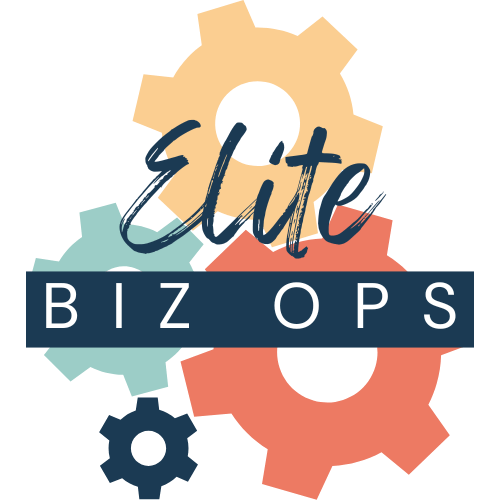
The Implementation Gap represents the divide between where a business stands and its ultimate goals, akin to a canyon that must be bridged to reach success. Rather than attempting to close this gap in one overwhelming effort, businesses should focus on laying down one secure plank at a time. This approach not only builds a strong bridge to the desired outcome but also fosters a sustainable process and mindset for tackling future challenges.
To effectively close the Implementation Gap, businesses must break down complex strategies into manageable, actionable steps. Prioritizing progress over perfection, creating clear task lists, and assigning ownership helps ensure everyone understands their role, reducing delays and confusion. By making progress visible through tracking tools and dashboards, businesses can keep teams aligned and motivated, turning plans into action for sustained growth.
Lisa, a consultancy firm owner, successfully closed the Implementation Gap by implementing tools like Hive for project management and Xero for financial tracking. By empowering her team through training and clear communication, Lisa's business saw immediate improvements in workflow efficiency and client satisfaction. Within a year, her firm doubled its client base, expanded into new markets, and achieved sustainable revenue growth, demonstrating the transformative power of starting small and embracing scalable systems.
Read more...
Operational overwhelm often hinders business growth, as many owners struggle with complex and scattered systems that prevent them from focusing on big-picture goals. Simplifying systems is crucial for scaling a business in 2025, as it reduces inefficiencies and creates a solid foundation for consistent, scalable growth. Streamlining processes such as client onboarding, financial tracking, and project management allows business owners to reclaim valuable time and redirect their energy toward strategy, vision, and client relationships.
Operational efficiency is essential for driving business success, enabling companies to accomplish more with less effort, cost, and time. By eliminating waste, reducing bottlenecks, and ensuring harmony among people, processes, and tools, businesses can improve productivity, turnaround times, customer satisfaction, and profitability. In 2025, prioritizing operational efficiency will be key to outpacing competitors and delivering consistently excellent results.
Implementing the right tools can significantly simplify business processes, with intuitive and scalable solutions addressing major operational pain points. Project management tools like Asana or Trello, automation platforms like Zapier, and communication platforms like Slack or Microsoft Teams can streamline tasks, centralize communication, and boost team morale. By aligning new systems with business goals, owners can efficiently track progress, manage tasks, and measure key performance indicators, ensuring every action moves the business closer to its milestones.
Read more...
Be honest... how often do you find yourself juggling a million tasks, only to feel like you're spinning your wheels without making real progress?
For many small business owners and non-profit leaders we work with, this feeling is all too familiar. You're passionate about your mission and dedicated to making a difference, but the constant chaos and lack of streamlined processes are holding you back. You spend your days putting out fires and tackling urgent tasks, leaving little time for strategic planning and growth.
I get it... balancing the demands of running a business while trying to grow can feel like trying to build a bridge while still standing in the river. You want to focus on what you do best, serving your clients and making an impact, but the operational inefficiencies are dragging you down.
This is where our ultimate guide to balancing business growth with operational efficiency comes in. By implementing proven business growth strategies, you can create a solid foundation that supports both your day-to-day operations and your long-term goals. Imagine a world where your business runs like a well-oiled machine, freeing you up to drive growth and help more people.
Let's dive in and transform the way you run your business, so you can focus on what truly matters.
Creating a Solid Foundation
Essential Elements for Operational Efficiency
Imagine trying to run a relay race where the runners haven’t practiced their handoffs. Chaos would ensue, and the team would struggle to reach the finish line. Similarly, in business, streamlined operations ensure that tasks are handed off smoothly, and everyone knows their role in achieving the company's goals. Business growth strategies depend on this solid foundation; without it, growth can lead to confusion and burnout.
To build this foundation, start by documenting your Standard Operating Procedures (SOPs). This will not only help in training new employees but also ensure consistency in your operations. Use tools like project management software to keep track of tasks and deadlines. Remember, efficient operations are the backbone of successful business growth strategies.
Business Growth Strategies
Aligning Your Goals with Operational Excellence
Balancing business growth with operational efficiency is much like balancing a tightrope. Lean too much in one direction, and you risk falling. The key to successful business growth strategies lies in aligning your growth goals with operational excellence.
Think of your business as a well-oiled machine. Each part must work in harmony for the machine to function optimally. If one cog in the wheel is out of sync, the entire system can break down. Similarly, business growth strategies should be developed with a keen eye on operational processes. For example, if your goal is to increase sales, ensure that your process for onboarding and following up (or fulfillment) can handle the additional demand without delays or quality issues.
Start by setting clear, achievable goals that align with your operational goals. Use data and analytics to monitor performance and make informed decisions. By integrating business growth strategies with operational efficiency, you create a seamless path to sustainable success.
Streamlining Processes for Maximum Efficiency
Tools and Techniques
Streamlining your business processes is akin to clearing a cluttered workspace. When everything is in its place, you can focus better and work more efficiently. Business growth strategies often falter when bogged down by inefficient processes and redundant tasks.
To achieve maximum efficiency, identify the bottlenecks in your processes. Use tools like workflow automation software and time management apps to streamline tasks. By eliminating inefficiencies, you can devote more resources to executing business growth strategies that drive success.
Balancing Act
How to Scale Your Business Without Compromising Efficiency
Scaling a business is like climbing a mountain. You need to ensure you have the right equipment and a solid plan to reach the summit. Business growth strategies are essential, but they must be balanced with operational efficiency to avoid stumbling along the way.
The key to successful scaling is to balance growth with the ability to maintain efficient operations. Start by assessing your current processes and identifying areas for improvement. Invest in scalable solutions like cloud-based software that can grow with your business.
Develop a plan that outlines how you will manage increased demand without compromising on quality or service. Remember, effective business growth strategies incorporate plans for maintaining operational efficiency, ensuring a smooth ascent to success.
Measuring Success
Key Performance Indicators for Growth and Efficiency
Measuring success in business is like using a map and compass on a journey. Without them, you risk losing your way. Business growth strategies rely on clear metrics to track progress and make informed decisions.
Key Performance Indicators (KPIs) are essential tools for measuring both growth and operational efficiency. For example, tracking customer acquisition costs alongside customer satisfaction rates can provide insights into the effectiveness of your growth strategies and operational processes.
Identify the KPIs that matter most to your business. These might include metrics like revenue growth, operational costs, customer satisfaction, and employee productivity. Regularly review these indicators to ensure your business growth strategies are on track and that your operations remain efficient. By measuring success accurately, you can navigate your business toward sustained growth and efficiency.
These strategies and insights are designed to help you achieve the perfect balance between business growth and operational efficiency. By implementing these tips, you can streamline your operations, making your business run like a well-oiled machine. This allows you to focus on what you do best, serve your clients more effectively, and scale your business without the stress and chaos of disorganization.
Remember, the key to sustainable growth lies in maintaining operational efficiency. By taking the time to optimize your processes and align your growth strategies, you can create a solid foundation for long-term success. With these tools at your disposal, you’ll have more time to innovate, connect with your clients, and enjoy the freedom to spend time with your family.
Start applying these principles today and watch as your business not only grows but thrives in an organized, efficient manner.
Ready to take your business to the next level? Apply for my 3-month rapid organizational growth consulting program, Maximizing Your Success. In this program, we'll dive deeper into customized strategies and tools tailored specifically for your business. Together, we'll transform your operations, boost your productivity, and set you on the path to sustainable growth. Don’t wait—let’s maximize your success and achieve the balance you've been striving for!

Every business reaches a point where it needs to reassess its strategies and operations. Key signs that a strategic overhaul might be necessary include declining sales, stagnant growth, high employee turnover, customer dissatisfaction, operational inefficiencies, lack of innovation, and repetitive issues. Addressing these challenges involves conducting a thorough market analysis, revisiting business goals, enhancing company culture, improving customer service, streamlining operations, fostering innovation, and solving systemic problems comprehensively.
To implement a strategic overhaul effectively, start by conducting a comprehensive review of your business, which includes financial performance, market position, customer feedback, and internal operations. Define clear objectives for what you wish to achieve and develop a detailed strategic plan outlining the steps needed. Communication with your team and consistent monitoring of progress through key performance indicators are crucial for ensuring the changes have the desired impact.
Fostering a culture of continuous improvement ensures the strategic overhaul remains an ongoing process. Regularly review and adjust business strategies to stay adaptable to changing market conditions and encourage innovation. Recognizing the need for a strategic overhaul and meticulously planning and implementing it can set your business up for long-term success and growth in a competitive market.
Read more...
This blog post highlights the significance of tracking metrics and Return on Investment (ROI) in the business world. Metrics provide valuable insights into a company's performance, helping identify strengths, weaknesses, and areas for improvement. They also act as benchmarks for success and aid in recognizing growth patterns and industry trends. ROI is a critical financial metric that assesses the profitability and value generated from investments. It allows businesses to evaluate the success of marketing campaigns, optimize resource allocation, and demonstrate business value to stakeholders. To effectively track metrics and ROI, it is recommended to utilize data analytics software, identify relevant key performance indicators (KPIs), and set up regular reporting and review processes. By leveraging metrics and ROI, businesses can make data-driven decisions and drive sustainable growth.
Read more...



